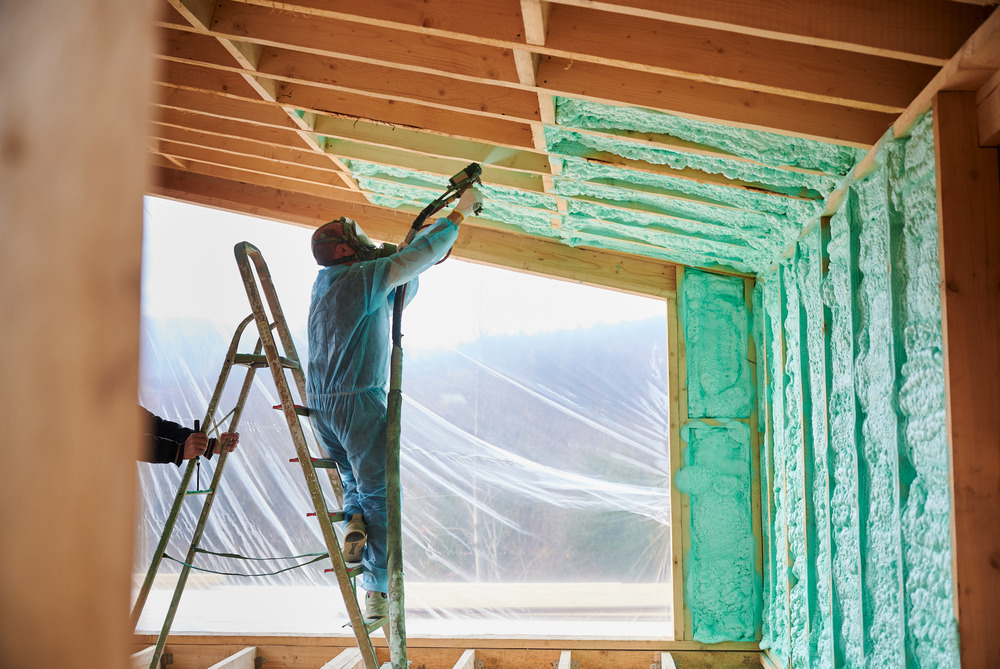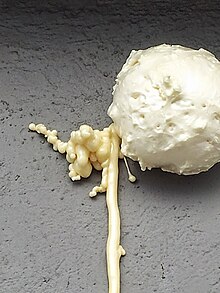Spray Foam: The Ultimate Remedy for Air Sealing and Insulation
Spray foam insulation has actually arised as a leading service for reliable air sealing and thermal insulation, supplying a special mix of properties that set it aside from standard methods. Its capability to increase and fill up spaces makes it particularly effective in preventing air leak, which can significantly impact power effectiveness. Recognizing the complete range of its benefits, installation processes, and contrasts with other insulation types is important for making informed choices. As we explore these facets, the ramifications for both new building and constructions and retrofits come to be significantly considerable. What elements should influence your option?
What Is Spray Foam?
Spray foam is a versatile insulation product that integrates the concepts of air securing and thermal resistance to boost energy performance in structures. Made up primarily of polyurethane or various other comparable compounds, spray foam is applied as a fluid that broadens upon call with surfaces, developing a solid, continual layer of insulation. This special building permits it to fill up voids, fractures, and gaps that traditional insulation materials might neglect, supplying an exceptional air seal.
There are two primary kinds of spray foam: open-cell and closed-cell. Open-cell spray foam is lighter and extra flexible, providing superb sound absorption and a lower R-value per inch - Spray Foam. In comparison, closed-cell spray foam is denser, offering a higher R-value, dampness resistance, and included structural integrity to constructing components
The application procedure usually includes specialized equipment, making certain a smooth application that sticks to numerous substratums, including concrete, metal, and timber. This versatility makes spray foam ideal for both new building and constructions and retrofitting existing structures. Its ability to create an airtight obstacle dramatically adds to lowering energy usage and improving interior air high quality, thus making it a preferred option amongst house owners and builders alike.
Benefits of Spray Foam Insulation
Among one of the most substantial advantages of spray foam insulation is its outstanding capability to produce a constant air obstacle, which effectively decreases power loss. Unlike standard insulation products, spray foam expands to load splits and spaces, guaranteeing that air leak is substantially decreased. This particular not only boosts energy effectiveness yet likewise leads to lower energy expenses gradually.
Additionally, spray foam insulation gives premium thermal resistance, adding to a much more secure interior environment. Its high R-value per inch enables reliable insulation in constrained rooms, making it perfect for attic rooms, walls, and crawl areas. The moisture-resistant buildings of spray foam aid stop mold and mold growth, promoting much healthier living problems.
An additional critical benefit of spray foam insulation is its sound-dampening high qualities (Spray Foam). It properly lowers sound transmission in between spaces, developing a quieter and a lot more comfortable home atmosphere. The longevity of spray foam likewise stands apart, as it does not droop or clear up with time, maintaining its efficiency throughout its life expectancy
Exactly How Spray Foam Works
Comprehending just how spray foam insulation works is necessary for appreciating its efficiency in air sealing and thermal resistance. Spray foam insulation contains two key components: isocyanate and polyol material. When these parts are mixed, they undertake a chemical reaction that creates the product to broaden quickly, developing a thick foam that fills cavities, fractures, and spaces.
As the foam broadens, it complies with surface areas, developing an airtight seal that considerably decreases air seepage. This particular makes spray foam insulation extremely reliable at preventing drafts and moisture penetration, which can cause energy loss and damage in time. Additionally, the closed-cell version of spray foam supplies superior thermal resistance as a result of its stiff structure, properly lessening warm my company transfer.
The one-of-a-kind homes of spray foam enable it to adapt uneven surface areas, guaranteeing comprehensive insurance coverage and a seamless obstacle. Consequently, spray foam insulation not just boosts power efficiency but additionally adds to improved interior air top quality by lowering the build-up of pollutants and irritants. Ultimately, official statement comprehending the mechanics behind spray foam underscores its role as a superior selection for insulation and air securing in both household and commercial applications.
Setup Process Summary

Prior to setup, the area needs to be appropriately cleansed and prepped, ensuring that surface areas are totally free from dust, dampness, and debris. Due to the fact that pollutants can endanger adhesion and total efficiency, this step is essential. As soon as the area is prepared, the application includes mixing the 2 components of the spray foam, which expands upon call and fills up voids effectively.
Trained experts should conduct the installation, making use of customized devices to guarantee uniform coverage and ideal thickness. Security safety measures, including wearing protective equipment and making sure correct air flow, are important throughout this procedure. After application, the foam typically remedies promptly, developing a strong barrier that improves energy effectiveness.
Contrasting Spray Foam to Typical Insulation
When examining insulation alternatives, spray foam insulation sticks out in comparison to conventional materials such as fiberglass and cellulose. Among the key advantages of spray foam is its premium air sealing capacities. Unlike fiberglass and cellulose, which can allow air infiltration, spray foam expands upon application, loading spaces and gaps to develop an airtight seal. This leads to enhanced power efficiency, as less heated or cooled air gets away the home, leading to reduced energy bills.
In addition, spray foam offers a greater R-value per inch than traditional insulation types, using more effective thermal resistance in a thinner profile. This characteristic is particularly helpful in rooms with minimal cavity deepness. Spray foam is immune to wetness and mold and mildew growth, which can be a considerable worry with cellulose and fiberglass, particularly in moist atmospheres.
Nevertheless, spray foam insulation generally brings a greater ahead of time cost than its conventional counterparts. Property owners should weigh this initial investment against long-lasting energy financial savings and performance benefits. Eventually, while both insulation types serve their purpose, spray foam emerges as an extra advanced remedy for modern-day insulation needs, particularly in terms of air sealing and thermal effectiveness.

Final Thought
In summary, spray foam get redirected here insulation stands for a highly efficient option for attaining optimum air sealing and thermal resistance. Its one-of-a-kind buildings, consisting of moisture resistance and audio dampening, make it suitable for various applications in both brand-new building and constructions and retrofitting projects (Spray Foam). The preliminary costs might be greater contrasted to traditional insulation products, the long-term benefits, such as considerable power financial savings and enhanced interior air high quality, justify the investment and emphasize its value in contemporary structure methods.
Spray foam insulation has arised as a leading service for effective air sealing and thermal insulation, providing a special combination of homes that set it apart from conventional techniques.Spray foam is a functional insulation product that incorporates the principles of air sealing and thermal resistance to improve energy performance in buildings.When assessing insulation alternatives, spray foam insulation stands out in comparison to traditional products such as fiberglass and cellulose. Ultimately, while both insulation kinds offer their purpose, spray foam emerges as a much more innovative option for modern-day insulation demands, specifically in terms of air securing and thermal performance.
In recap, spray foam insulation represents a highly effective solution for attaining optimal air securing and thermal resistance.